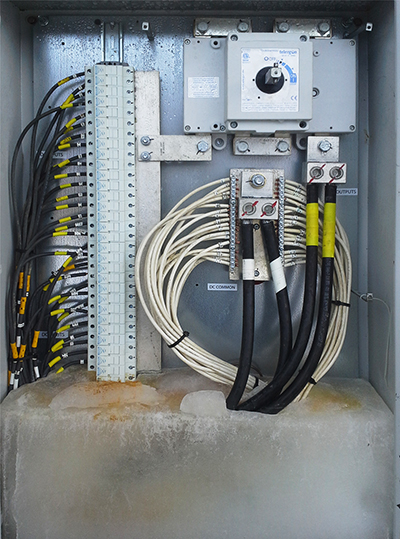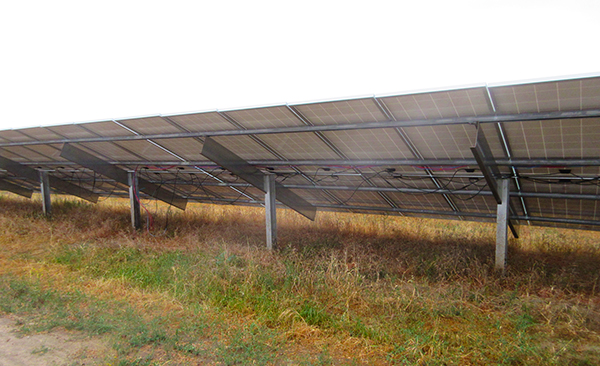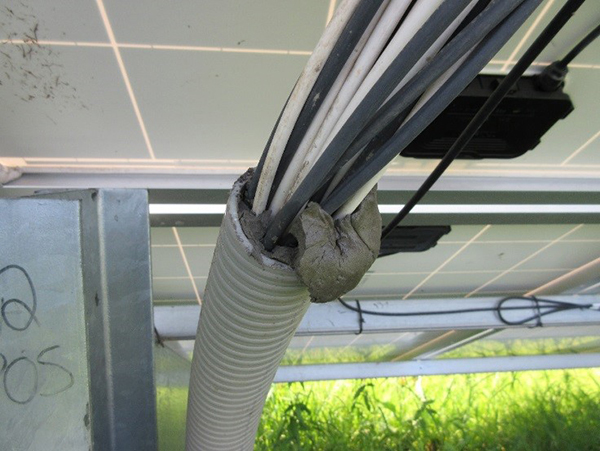- International
- Argentina
- Australia
- Austria
- Belgium
- Brazil
- Canada
- China
- Czaech Republic
- Denmark
- Finland
- France
- Germany
- Hong Kong
- Hungary
- India
- Ireland
- Italy
- Japan
- Mexico
- Netherlands
- Norway
- Philippines
- Poland
- Portugal
- Republic of Korea
- Romania
- Russian Federation
- Singapore
- Slovenia
- South Africa
- Spain
- Sweden
- Thailand
- Turkey
- UAE
- United Kingdom
- United States
Avoid Wire Management Disasters in 3 Easy Steps
By Nick Korth, Product Marketing Manager – Energies at HellermannTyton North America
Just like the weather, poor wire management application and lack of strategy can be catastrophic. Unlike storms and natural disasters, however, wire management failure on solar installations is not only predictable, but also easily preventable.
If you want to reduce risk and added costs, consider the following three-step process:
The first step is education. NEC 2017 prescribes a number of requirements dictating proper wire management – unfortunately, they tend to be open to interpretation.
According to NEC 110.12, “Electrical equipment shall be installed in a neat and workmanlike manner.” NEC 338.24 refers to “insufficient support of conductors and stress on junction box and plug connections.”
These codes provide a baseline for evaluation and inspection, but they don’t guarantee a long-lasting installation. Seeking out best practices, and adopting quality assurance programs, will go a long way to ensure that installers learn and practice proven installation procedures.
For example, one site actually had a plastic-coated metal cable tie routed through a module hole. The tie was so tight that, due to wind and thermos-cycling, it had sliced through the wire jacket and caused a fault. This is a profit killer; any time you have to repair a serious fault, you drastically reduce your profit margins.
Another example was damage to a cable jacket because of poor application of metal clips. It’s not uncommon to see workers pounding on poorly designed, cheap metal clips with the back of a side cutter or screwdriver. Not only does this distort the actual clip, which affects performance, it can cause damage to the module itself. The solution is to use better metal clips that are designed to go on easily and hold incredibly well.


The second step in having a good wire management plan is specifying the correct materials, and having the correct product for the application. Plastic products often get a bad reputation in the solar industry, and are frequently seen as a poor alternative to metal. But, like all products, quality is often relative; you get what you pay for. Not all plastic wire management products are created equal. Plastic cable ties get a bad rap. Like everything else on the market, there are varying levels of quality; don’t let the reputation of inferior plastic products scare you away from seeking out and using a stronger, well-made, and lasting plastic cable tie.
One particular site happened to be in a desert environment, but had cheap, “UV rated” cable ties looped through solar module mounting holes. After three replacements in four years, the owner of this single axis tracker installation decided enough was enough; he specified and was able to find a product to match the hazards of constant heat, thermo-cycling, wind, and sun.
But think about this: four laborers for five days, at $20 per hour, adds up to $3200 a year. Over the course of five years, a site owner could spend $16,000 on labor for replacing cheap cable ties alone, significantly adding to the operations costs. That’s in addition to the multiple faults and connector failures, and the added risk of junction box failure due to strain on the lead wires.

Here’s where UV stabilized fasteners truly shine. Designed with a mounting base or a cable tie buckle, these products will last five to seven times longer than a UV rated cable tie through a module mounting hole. Parts made from UV stabilized plastic, along with other modifiers, can drastically increase the life expectancy of these products in the elements. In fact, some plastic compounds can last even longer – 15 to 25 years. Choosing engineered plastics designed to perform out in the elements will consistently deliver rewards.
Lastly, come up with a sound O&M strategy. Consider the combiner box shown below. The wire entry was sealed with a compound, but one that was not rated for outdoor use. As the compound flaked away, water seeped into the conduit and flowed down to the combiner box. A more routine maintenance schedule could have caught this issue before leading to expensive fixes. Unfortunately, in this case, a complete combiner box replacement was required.
Focus on these three steps to successfully master solar installation costs and risks. Effective wire management can help save money at installation, reduce installation times and maintenance visits, and continue delivering over the long term.
Source: NA Clean Energy Magazine
About HellermannTyton
HellermannTyton is a global manufacturer of cable management and identification solutions for automotive, solar, electrical, construction, industrial automation, broadband and other OEM markets. The company's integrated approach to product design, sustainability, production, quality assurance and delivery is optimized to benefit local and global customers. HellermannTyton operates in 39 countries, with North American headquarters in Milwaukee, Wisconsin. (www.hellermann.tyton.com).
